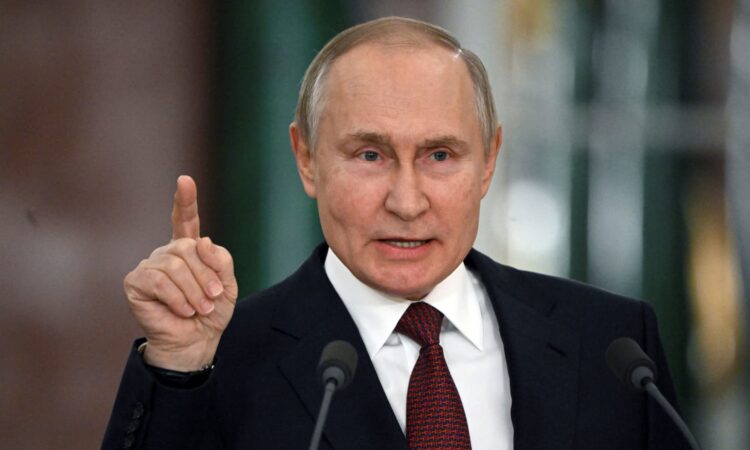
Russian President Vladimir Putin speaks during a news conference after a meeting of the State Council on youth policy in Moscow, Russia, December 22, 2022.
Sergey Guneev | Sputnik | Reuters
The latest round of Western sanctions against Russia over its invasion of Ukraine are beginning to pinch the country’s economy.
Russian Finance Minister Anton Siluanov reportedly told journalists Tuesday that an oil price cap imposed by the G-7 (Group of Seven) major economies, as well as the European Union and Australia, is squeezing Russian export income and will potentially push Moscow’s budget deficit higher than the expected 2% next year.
Price caps on Russia’s crude and refined oil exports could force the Kremlin to cut output by between 5% and 7% next year, RIA news agency cited Deputy Prime Minister Alexander Novak as saying on Friday. However, Moscow should be able to finance the shortfall through domestic bond issuance and its rainy day fund, officials have suggested.
The 27 countries of the EU also agreed in June to ban the purchase of Russian crude oil from Dec. 5.
“It’s still too early to fully assess the impact of the G7 oil price cap and the EU’s ban on Russian crude imports which came into effect on 5th December, but initial signs suggest that Russia’s economy is starting to feel the pinch,” said Nicholas Farr, emerging Europe economist at Capital Economics.
“High-frequency data show that Russian oil exports have fallen since the sanctions were introduced and the spread between Brent crude oil prices over Urals oil prices widened to a six-month high [last] week.”

Farr suggested that this will compound the hit to Russia’s energy revenues from falls in global prices in recent months. International benchmark Brent crude fell from a peak of around $98 per barrel in October to around $77 earlier this month, recovering to around $84.50/bbl by Tuesday morning in Europe.
Meanwhile, the Russian ruble fell by almost 10% against the dollar last week, making it by far the worst performing EM currency after defying expectations for much of the year.
Farr suggested a key consequence of a weakening ruble will be upward pressure on inflation due to higher import costs. The Bank of Russia (CBR) ended its run of interest rate cuts in October and upon keeping its monetary policy unchanged in December, warned that inflationary risks “prevail” over disinflationary ones.
If the ruble continues to fall in 2023, Farr suggested that the CBR may be forced to look at reintroducing rate hikes in order to keep inflation under control, and Capital Economics believes the erosion of Russian resilience to Western sanctions will emerge as a key theme of 2023.

“Russia has benefited significantly from the boost to its terms of trade from high commodity prices in 2022, but…this support to the economy now appears to be fading,” Farr said in a note Friday.
“We think that Russia’s economy will suffer another contraction in 2023. Meanwhile, falling energy revenues means that Russia’s balance sheets will come under strain.”
Having been a key pillar of strength for the Russian economy this year, Capital Economics expects the current account surplus to “shrink rapidly in the coming months.”
“There’s a high risk that a large external rebalancing is needed from 2024, which will keep growth extremely sluggish,” Farr added.




